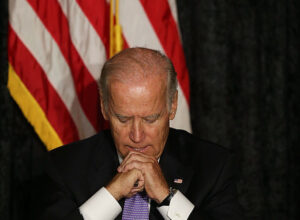While Russia and China remain the biggest threats to America and its Western allies, there is a third unfriendly power that Western leaders should remain watchful of: the Islamic Republic of Iran.
Like Russia and China, Iran is directed by an authoritarian and seemingly bellicose regime with some strong anti-Western interests. For now, that regime shows no serious signs of losing power internally. This is despite a series of recent threats to its authority: Iranian women protesting the violence of the state-sanctioned Islamic morality police; the American assassination of Iran’s talented and nefarious expert in warfare on foreign soil, General Qasem Soleimani; the humiliating and avoidable death of the President during a helicopter crash; and the impending demise of the 85-year-old Ayatollah Ali Khamenei.
Iran has been brutalised and woefully governed in recent years. Faced with moral, political, economic as well as ecological issues, Iran might appear to be floundering. The question is now: will one of the great civilisations of world history fall victim to its deep-seated internal crises or will it remain immovable and intransigeant? As the state begins to crumble, will Iran resist collapse?
The nation has endured against the odds before. More than any other region which succumbed to the Islamic conquests of Late Antiquity, Persia preserved a strong sense of its civilisational identity under the banners of the Caliphate.
Dualism has always been the key to Iran’s identity. The Zoroastrian religion of ancient Iran is renowned for its supposed cosmic dualism, positing a battle between good and evil in which the former is eventually triumphant. Iranian self-understanding has also been shaped by how Persian poets of the early Islamic era blended pre-Islamic Iranian histories and mythologies into their masterpieces. The 10th-century Abolqasem Ferdowsi preserved legendary stories of old Persian kings, and voiced nostalgic dismay that the minbar (a mosque’s pulpit) should have become as exalted as the Persian throne. Islam and Persian civilisation ended up existing in a creative tension that is peculiarly Iranian.
Modern Iran is in some respects similarly dualistic, possessing both what Westerners would recognise as the ordinary instruments of secular republican government and an Islamist constitutional superstructure. A President, parliament, and more or less modern state apparatus coexists with a Supreme Leader, a clerical Guardian Council which “supervises” elections and can veto legislation, and a legal system incorporating sharia. This dualism is by design, realising the Islamic Republic’s legal-theological ideal of the velayat-e faqih or guardianship of the Islamic jurist. Described by Ayatollah Khomeini as “one of the most important obligations” of the Iranian people and “more necessary even than prayer and fasting”, this hyper-politicisation of Shia Islam was a hallmark of his rule. While this ideology guarantees the Islamic character of the state, it is less traditionally Islamic than one might expect. Rather, as one academic analyst of Iran’s constitutional order observes, it “reinvents the [Shi’ite] tradition in response to the postcolonial crisis of Muslim-majority contexts”. The Islamic Republic’s construction of a velayat-e faqih deep state is best understood, then, as a strange fusion of Shia Islam and 20th-century revolutionary politics.
Can Iran’s unique hybrid system survive? Ali Ansari, Professor of Iranian History at the University of St Andrews, describes the socio-theological hold of radical Shi’ite Islam over the Iranian population as the Islamic Republic’s “moral problem”. He estimates that as many as five to six million Iranian women now refuse to wear the veil, and as many as two or three times that number tacitly support their rebellion. This is a significant challenge to the regime’s Islamic authority. Stories of elite corruption and the brutal and sexualised repression of female protestors are hardly an advert for the moral probity of the Islamic Republic’s guardians. There must be some in Tehran who worry that the theological and political ruling class is burning through its reserves of moral-religious capital.
Ansari nevertheless warns against Western liberals being too cynical about the regime’s commitment to a particular reading of Shia Islam. The people running Iran are, by and large, “true believers”. This makes for a tense, brittle situation, in which there is a real risk of religiously inflected protests boiling over into much more serious civil strife.
Meanwhile, a succession crisis also torments Iran. Despite lacking the more invigorating charisma of his predecessor Khomeini, Ayatollah Khamenei has been a stabilising influence on the Islamic Republic. His death will be a moment of trial for the regime. Ansari suspects that a viable succession plan will already have been worked out. For the Islamic Republic’s elites, the show must go on. Until his untimely death, some commentators considered the late President Raisi a likely choice. Now the preeminent candidate is the present Supreme Leader’s son, Mojtaba Khamenei, who is thought to have commanded the Basij, the volunteer paramilitary wing of the Iranian Revolutionary Guard Corps.
Such political instability is not helped by the mixed economic situation. A consensus hasn’t yet been reached on the effectiveness of US sanctions. But as in Russia, sanctions don’t appear to have been particularly punishing, with possible benefits such as forcing pragmatic moves towards economic autarky. Ansari, however, questions whether the issue is instead that the West has only half-heartedly enforced economic measures against Iran. For him, sanctions against Iran seem designed to send signals to foreign and domestic audiences rather than to break the country’s productive capabilities and bleed the Islamic Republic’s wealth.
Yet Iran’s economy isn’t as robust as the country’s defenders might have it. Despite Iran possessing a significant share of the Persian Gulf’s oil resources, Ansari argues that the Revolution’s leaders made a major error in adopting a flimsy version of the Shah’s planned energy policies at the end of the Seventies. These were drawn up when Iran had a population of some 30 million; now estimates hover at around 90 million.
Some sectors of the Iranian economy are faring worse than others. Iran’s aviation industry, once an unparalleled success in the Gulf, has been hit hard by Western sanctions and chronic mismanagement. Sanctions have made it highly difficult to acquire key parts for maintenance of an ageing fleet of aircraft. There has been some suggestion that this may have been a factor in the helicopter crash which killed President Raisi. The Iranian automotive industry is in a similarly depressing shape. Cars produced in the Seventies, in the last years of the Shah’s rule, sell for higher prices than far more recent models. Iranian drivers don’t seem to have great faith in automobiles produced in the Islamic Republic.
On top of this, the Islamic Republic also currently faces a severe ecological crisis. Indeed, Ansari thinks this might be the most dangerous challenge to the Islamic Republic: it is currently stumbling blindly into a ruinous ecological catastrophe.
Due to a combination of climate change, corrupt mismanagement of Iran’s water resources and infrastructure, and an unsustainable reliance on pistachio farming as a cash crop, Iran is drying up. The north of the country is, Ansari says, more or less holding up, but his prognosis for southern Iran is much grimmer. He thinks some Western analysts are underpricing the potential for a devastating — perhaps irreversible — collapse in Iran’s ability to provide water to its farmers.
Startling comparisons can be made to the destruction of the Aral Sea: the most infamous example of an authoritarian state doing irreversible environmental damage in Central Asia. From the Sixties, short-termist and overambitious irrigation programmes in the Soviet Central Asian republics steadily drained the sea, which has now all but disappeared. There too, poor government was exacerbated by a foolish overreliance on a cash crop, Uzbek cotton for the Soviets.
These four issues don’t bode well for Iran’s future. But Westerners would be unwise to expect changes for the better. In the face of popular protest, the Revolutionary Guard Corps will most likely defend the regime and its own substantial political and economic interests. Iran’s ruling class would likely resort to using the Corps to rule by martial law if necessary.
But perhaps that won’t be necessary. For now, Iran seems socially resilient. Ansari wonders whether Iran in the second quarter of the 21st century will resemble the country as it was in the early 20th century: a weak state with unstable institutions, but a cohesive nation with a strong civilisational identity. Those traits of national stoicism and an uncanny ability to manage tensions suggest an Iranian ability to weather coming storms without collapse.
There seems little immediate hope of a major liberalisation in Iran. The country’s middle class is somewhat politically significant but numerically small. Iranian critics of the Islamic Republic are often intensely patriotic, and suspicious of Western intentions towards their nation. Even the more liberal dissidents, who hope that Iran will enjoy a more Western and democratic future, are somewhat demoralised by the current state of the West: its internal divisions, its decadence, its indecision.
I am told that those who might once have looked to America for inspiration have been horrified by the subversive zealotry on display in the radicalised student protests on American college campuses. Iranian moderates remember with grim apprehension where a toxic cocktail of revolutionary politics, student protest and Islamist fervour can lead an unsuspecting country.
To some extent, managing the Iran problem will require both a recovery of American backbone and a careful self-discipline to avoid needless escalation with a regime which isn’t afraid to choose violence. There is a danger of Western bluster being counterproductive: announcing sanctions and failing to enforce them can send extremely unhelpful signals. Targeted assassinations, such as that of Soleimani, are certainly risky; killing Soleimani in Iraq, however, was a wiser choice than striking Iranian soil.
America’s task is to forcefully contain Iran without being drawn into an unwinnable regional conflict. The enforcement of clear red lines is a necessity, though it seems unlikely that we will see this from the present White House. In fact, the radical politicisation of junior US civil servants and the personal unpredictability of both candidates in the 2024 election make it hard to see how Iran should be expected to reliably read the signals it receives from Washington. After all, deterrence requires the opposition to understand the cost of bad behaviour.
The more you learn about Iran, the more it feels like a perennial civilisation, stuck in endless cycles of violent tragedy, as permanent and immovable as the towering Zagros mountains. It is hard to avoid feeling cynical and pessimistic about the medium-term future of this civilisation-state. In the words of the 19th-century statesman Lord Salisbury, “whatever happens [in Iran] will be for the worse, and therefore it is in our interest that as little should happen as possible”.
Disclaimer
Some of the posts we share are controversial and we do not necessarily agree with them in the whole extend. Sometimes we agree with the content or part of it but we do not agree with the narration or language. Nevertheless we find them somehow interesting, valuable and/or informative or we share them, because we strongly believe in freedom of speech, free press and journalism. We strongly encourage you to have a critical approach to all the content, do your own research and analysis to build your own opinion.
We would be glad to have your feedback.
Source: UnHerd Read the original article here: https://unherd.com/




